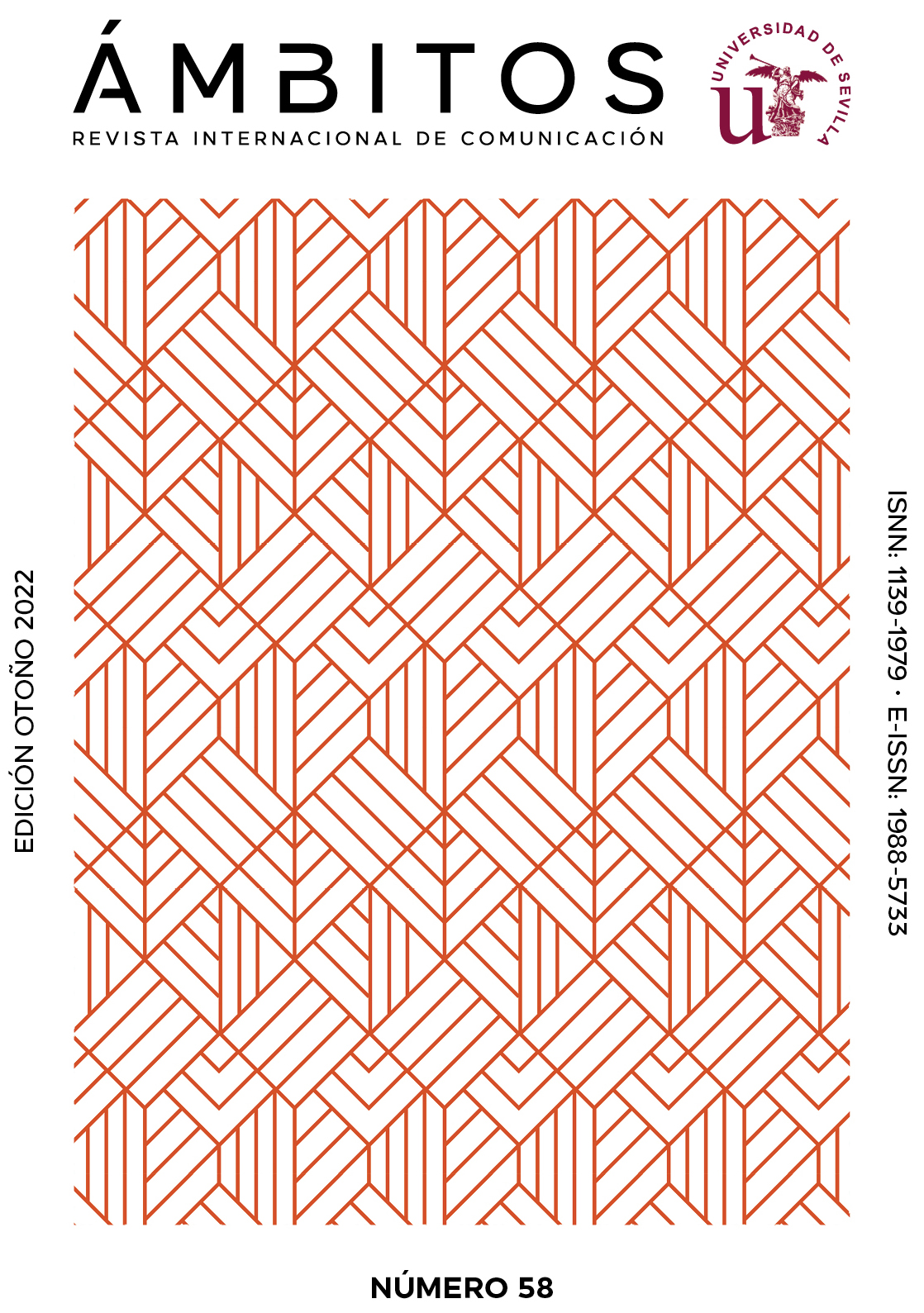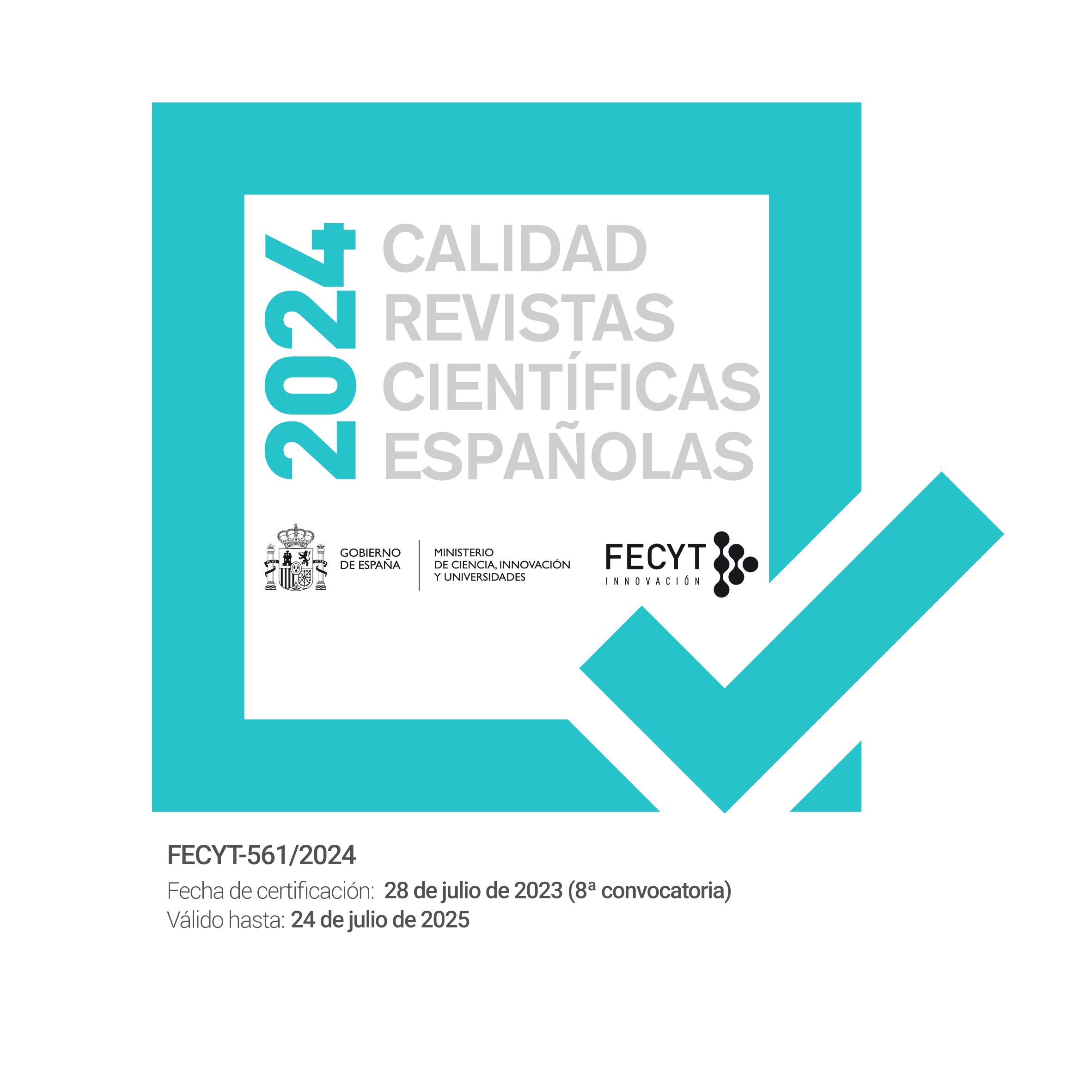Spectacularization in the print media: analysis of specialized radio magazines
DOI:
https://doi.org/10.12795/Ambitos.2022.i58.09Keywords:
magazines, radio, spectacularization, communication history, cultureAbstract
The article aims to analyze the spectacularization in radio magazines in Brazil in the 1920s, 1930s, 1940s and 1950s. With this theoretical basis, the qualitative method was used for data collection, due to its characteristics that fit the theme of work of historical rescue of communication, particularly of the printed medium. We opted for qualitative research because it has unique steps in data analysis and makes use of different research strategies. Qualitative procedures show different perspectives and we think about the media effects in this context. The research was carried out at the Museu da Imagem e do Som, Arquivo Público and Biblioteca Mário de Andrade in São Paulo and also at the National Library of Rio de Janeiro, among other centers. The research problem lies in the effects that this type of production causes on society and as a result we conclude that the magazines were improving in editorial quality but, with a central focus on showbiz and the market, it led to the trivialization of culture, the generalization of frivolity and the scandalous journalism, which unfortunately persists in the media to this day. The research contributed to the understanding that radio and magazines, where one is a vector of growth of the other, were being built for the spectacularization in society and this at various times has shown to have very dark effects, as it transformed, for example, the political discussion into entertainment and journalism in irresponsibility.
Downloads
References
Alberti, V. (2013). Oral history handbook. FGV Publisher
Amado, J. y Ferreira, M. M. (2006) (1996). Uses and abuses of oral history. FGV Publisher
Calabre, L. (2002). The radio age. Zahar
Cantero, T. M. y Comegno, W. (2013). The São Paulo radio dynasty. ABR Publisher
Creswell, J. W. (2010). Research project. Qualitative, quantitative and mixed method. Artmed
D’Ângelo, N. (2013, July 22 th- 26th) Intellectuals, radio magazines and popular music in Brazil: the written radio – 1924-1954 [Symposium] XXVII National History Symposium. National History Association. Rio de Janeiro, Brazil
Debord, G. (1997). The society of the spectacle: comments on the society of the spectacle. Counterpoint
Faour, R. (2002). Radio Magazine. Relume-Dumará
Haussen, D. y Bacchi, C. (September 2001) Radio Magazine through its editorials (1950s) [Symposium] XXIV Intercom–Brazilian Society for Interdisciplinary Communication Studies, UNIDERP, Brazil
Llosa, M.V. (2013). The civilization of the spectacle. Objective.
Locke, I.F., Spirduso, W.W. y Silverman, S.J. (2007), Proposals that work: A guide for planning dissertations and grant proposals (5th ed.), Thousand Oaks, Sage.
Maranhao Filho, L. (1991). Radio memory. Jangada
Ortiz, R. (1994). The modern Brazilian tradition: Brazilian culture and the cultural industry. (5th ed). Brasiliense.
Saroldi, L.C. y Moreira, S.V. (2005). National Radio, Brazil in tune. Funarte Publisher
Vaz Filho, P. S. (2009). The history of Brazilian radio from the perspective of 20th century newspapers and magazines [Master’s Dissertation, Cásper Libero College]. https://bit.ly/3BWFZCu
Weber, M.H. (2011). Public space and event: from the public event to the political-media spectacle. Kaleidoscope, Journal of Communication and Culture, 10, 189-203. https://bit.ly/3M0dqIU
Downloads
Published
How to Cite
Issue
Section
License
Copyright (c) 2022 Antonio Adami, Lúcia Moreira Dias

This work is licensed under a Creative Commons Attribution-NonCommercial-ShareAlike 4.0 International License.
Ámbitos. Revista Internacional de Comunicación is an open access journal, which means that all content is freely available at no charge to the user or their institution. Users may read, download, copy, distribute, distribute, print, search or link to the full text of articles, or use them for any other lawful purpose, without seeking prior permission from the publisher or author. This definition of open access is in accordance with the Budapest Open Access Initiative (BOAI).

Unless otherwise noted, all content in the electronic edition is distributed under a "Creative Commons Attribution-NonCommercial-ShareAlike 4.0 International License". You can consult the informative version and legal text of the licence here. This should be expressly stated in this way where necessary.
In case of acceptance of the manuscript, the authors cede the rights of the work for its publication to Ámbitos. Revista Internacional de Comunicación under the Attribution-NonCommercial-ShareAlike 4.0 International license contract (CC BY-NC-SA 4.0). The authors retain copyright and third parties are authorised to copy, distribute and make use of the work, provided they comply with the terms and conditions set out in the licence
- Cite the authorship and the original source of publication (journal, publisher and URL of the work).
- Do not use them for commercial purposes.
- If you remix, transform or create from the material, you must release your contributions under the same license as the original.
More information can be found at https://creativecommons.org/licenses/by-nc-sa/4.0/deed.es


















